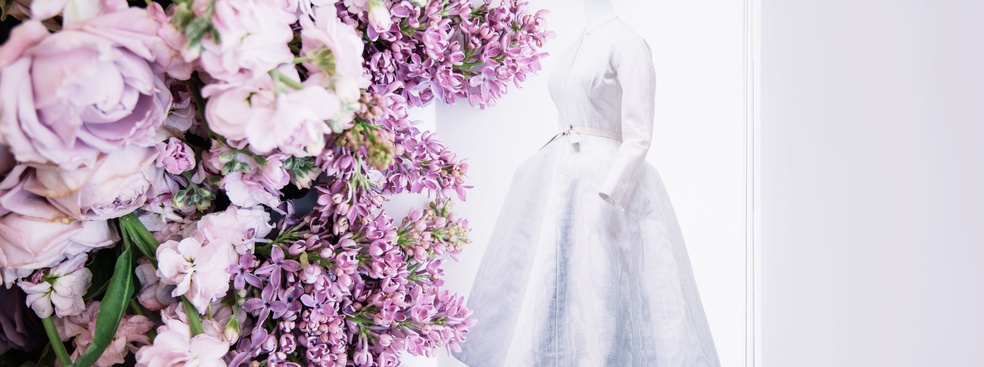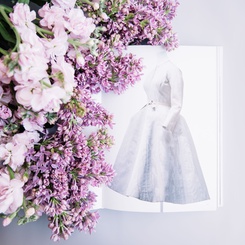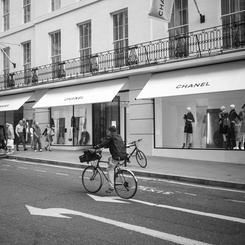What do art and luxury have in common? How do they interact? Delphine Dion, professor of marketing and Academic Director for the Luxury Brand Management Major of the Global MBA, discusses the relationship between art and luxury, and how luxury brands draw inspiration from art.
Art and luxury have a long history of influencing each other to create timeless, aspirational experiences. Luxury brands have many connections with the art world, and brand and creative directors increasingly draw on art trends and philosophy in their work. What is it about art that is so inspirational for luxury brands and their creative directors?
First, brands celebrate artists. Many brands have open foundations where they organize exhibitions on contemporary art. For instance, the Fondation Cartier pour l’art contemporain is organizing an exhibition on the artist Damien Hirst, and the Fondation Louis Vuitton is currently hosting the Morozov collection featuring French modern art.
Luxury brands also celebrate artists by featuring masterpieces in their stores. Their boutiques are becoming hybrid institutions, featuring elements of art galleries and museums in addition to the retail offering. For instance, the recently opened Loewe store on rue St. Honoré displays pieces by Pablo Picasso, Richard Hawkins, and many other contemporary artists.
Luxury brands also collaborate with artists to create capsule collections, to design fashion shows or shop windows. For instance, Louis Vuitton has collaborated with many major figures in contemporary art such as Takashi Murakami, Stephen Sprouse and Olafur Eliasson, and more recently Jeff Koons. Another example is the last Dior haute couture show. The backdrop for Dior was created especially for the event by French artist Eva Jospin. It is a magnificent installation celebrating the savoir-faire and cultures of the world, at the intersection of art and haute couture.
Many creative directors are also inspired by artists. Take the case of Yves St Laurent with the Mondrian dress, inspired by the abstract art of Dutch artist Piet Mondrian. Another example is Maria Grazia Chiuri, creative director of Dior, who draws inspiration from the creations of surrealist artists like André Breton, Lee Miller, and Dora Maar, to name a few.
The interconnections don’t stop there: luxury brands do not only celebrate artists or collaborate with artists, creative directors are artists themselves. They share the same characteristics: creativity, passion, imagination, inspiration. They are artists who can create new aesthetics. Look at the way Sidney Toledano, Chairman and CEO of LVMH Fashion Group, talked about Hedi Slimane, creative director of Céline: “Hedi Slimane is an exceptional designer, complete artist and passionate about his work. I am certain that he will bring his creative energy and discipline to lead Céline to ever greater success.” Creative directors are accomplished artists, and fashion shows are artistic performances- you only need to watch a haute couture fashion show to see evidence of this.
These examples demonstrate the artification of luxury, the process of transforming luxury into art. Artification changes the status of the brand and products, and thus reinforces the idea of a better-than-ordinary brand whose price and symbolic power are undisputed. Luxury pieces are unique and different from mass market goods. They are works of art.
Artification is key, because the luxury business has changed dramatically over the past two decades. Luxury firms began as niche businesses, limited to the happy few who could afford their products. Today, luxury is very different; it is an actively growing sector, featuring corporate giants, targeting an expanding clientele.The resulting challenge for luxury brands is to balance massification while reasserting the singularity and exclusivity of its offerings. Luxury brands need to distance themselves from mass-market brands and justify the status of the brand as a luxury brand, meaning an extraordinary brand whose price and symbolic power are a cut above the rest. Artification is a major way of achieving this.
Artification and heritage
Artification plays an important role for heritage brands, that is to say brands that have embedded their heritage and history in their value proposition. Being a heritage brand doesn’t simply mean being a long-standing, traditional brand: a heritage brand can also be very modern and creative. Many French luxury brands were founded in the 19th century, but are at the cutting edge of fashion and design. Take Louis Vuitton, for example. The brand draws on its heritage, shaped around the art of traveling, and collaborates with major contemporary artists, like street artists, rappers, and so forth. Delphine Dion explains, “I define heritage brands as brands that embedded their value proposition in their heritage. However, being a heritage brand does not mean being an old and traditional brand from the past. A heritage brand can be very modern and creative. Many French luxury brands go back from the 19th century but they are at the cutting edge of fashion and design. Consider Louis Vuitton, for instance. The brand draws on its heritage shaped around the art of travelling and collaborates with major artists of the contemporary scene, including street artists, rappers and so on.”
These artists, including creative directors, constantly revisit the brand heritage to create up-to-date creations. For instance, it is fascinating to observe how Maria Grazia Chiuri is constantly reinterpreting Dior heritage. She revisits iconic pieces such as the Bar jacket. She draws inspiration from Christian Dior's life. For instance, the spring-summer 2021 haute-couture collection is inspired by Christian Dior’s fascination with divination and signs of destiny. The collection reinterprets and enhances the symbolic magic and beauty of tarot cards.
As many fashionistas would agree, luxury is an art in and of itself. Creative directors and designers draw inspiration from artists, and fashion houses showcase the work of artists through foundations, their stores, and their products. Artification is essential for luxury brands so that they can distinguish themselves as high-quality and unique, and both heritage brands and brands with heritage can use it to bolster their brand. Life imitates art - and so does luxury.









